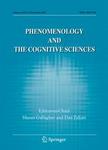版权所有:内蒙古大学图书馆 技术提供:维普资讯• 智图
内蒙古自治区呼和浩特市赛罕区大学西街235号 邮编: 010021

作者机构:Johannes Gutenberg Univ Mainz Dept Philosophy Jakob Welder Weg 18 D-55128 Mainz Germany
出 版 物:《PHENOMENOLOGY AND THE COGNITIVE SCIENCES》 (Phenomenology Cogn. Sci.)
年 卷 期:2017年第16卷第4期
页 面:715-736页
主 题:Bayesian inference Cognitive contents Mathematical contents Predictive coding Predictive processing Structural representation
摘 要:Pawe Gadziejewski has recently argued that the framework of predictive processing (PP) postulates genuine representations. His focus is on establishing that certain structures posited by PP actually play a representational role. The goal of this paper is to promote this discussion by exploring the contents of representations posited by PP. Gadziejewski already points out that structural theories of representational content can successfully be applied to PP. Here, I propose to make the treatment slightly more rigorous by invoking Francis Egan s distinction between mathematical and cognitive contents. Applying this distinction to representational contents in PP, I first show that cognitive contents in PP are (partly) determined by mathematical contents, at least in the sense that computational descriptions in PP put constraints on ascriptions of cognitive contents. After that, I explore to what extent these constraints are specific (i.e., whether PP puts unique constraints on ascriptions of cognitive contents). I argue that the general mathematical contents posited by PP do not constrain ascriptions of cognitive content in a specific way (because they are not relevantly different from mathematical contents entailed by, for instance, emulators in Rick Grush s emulation theory). However, there are at least three aspects of PP that constrain ascriptions of cognitive contents in more specific ways: (i) formal PP models posit specific mathematical contents that define more specific constraints;(ii) PP entails claims about how computational mechanisms underpin cognitive phenomena (e.g. attention);(iii) the processing hierarchy posited by PP goes along with more specific constraints.